Orange Curd Recipe
Orange Curd is a sweet, rich, and creamy preserve with the tang of citrus. A variation on the more common lemon curd, it’s quick and easy to make at home. All you need are oranges, a dash of lemon juice, eggs, butter, and sugar. Eat the fruity, custard-like curd on bread and butter, scones, toast, pancakes, with yogurt, or in desserts and cakes.
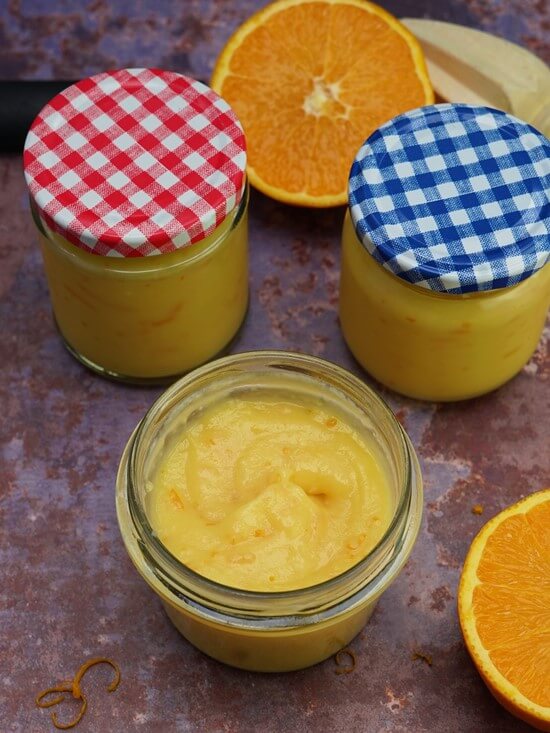
Jump to Recipe
Every year, I make several types of preserves. Jams, chutneys, pickles, cordials, syrups, and fruit curds. Of course, there are shelves full of them at every supermarket, deli, and farmer’s market. But, as with many things, there’s great enjoyment to be had in creating something from scratch. Also, check those labels, and you might get a shock at some of the ingredients. I was amazed to discover that a well-known brand who project a very traditional image, complete with gingham covers on their jars of preserves, include environmentally disastrous palm oil in their fruit curds!
Happily though, the Orange Curd recipe I’m sharing today can be made surprisingly quickly and easily at home with just a few ingredients.
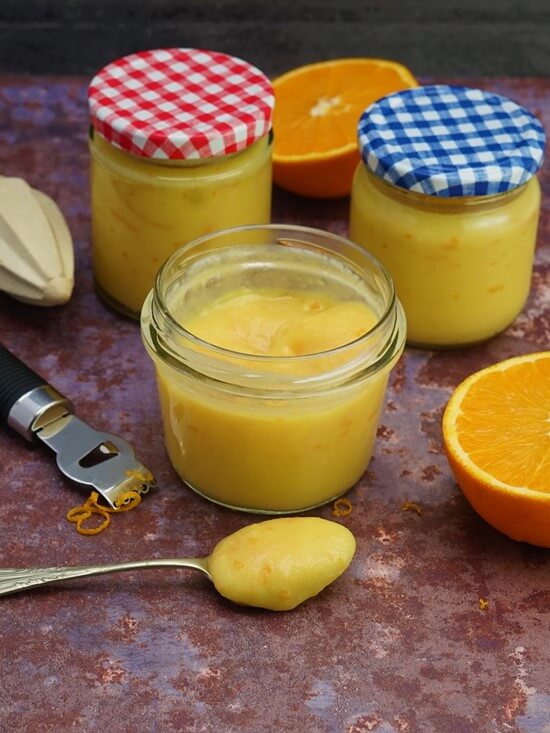
WHAT ARE FRUIT CURDS?
Fruit curds are sweet, rich, and creamy spreads. With a name including the word ‘curd’ you’d be forgiven for thinking that Orange Curd, and the more familiar lemon curd, have something to do with cheese making. Curds are the solid part of milk which is used to make cheese after the liquid whey has been strained off. Although fruit curds don’t contain milk, it’s thought that their name refers to the use of acidic lemon juice to split curds and whey.
Fruit curds are made with eggs and butter sweetened with sugar and flavoured with fruit juice, usually citrus. Although we tend to eat fruit curds in the same ways as jam (on bread, toast, pancakes, in cakes, desserts etc.), they aren’t true preserves. As I explain in my Beginner’s Guide to Jam Making, preserves like jam are made by boiling fruit with sugar until it reaches a gel-like setting point. However, fruit curds get their spreadable consistency from butter and eggs gently cooked with fruit juice and a lower proportion of sugar. It’s important to do this gently as cooking at too high a temperature would split, curdle, or overcook the eggs.
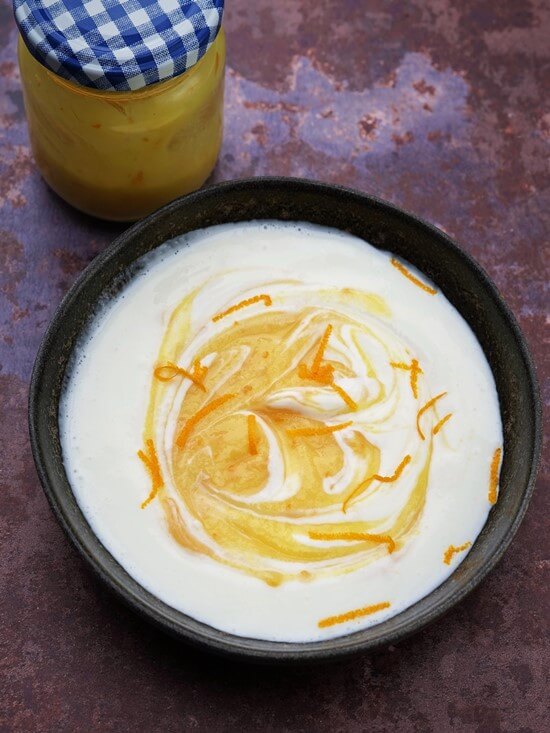
HOW DO I MAKE ORANGE CURD?
You’ll find detailed instructions for making my Orange Curd in the recipe card at the end. But here’s an overview of the steps.
- Prepare 3 small jars with lids by washing, rinsing, and popping in a low oven to sterilize.
- Melt the butter in a saucepan (see below for 2 alternative methods) then add the sugar, the zest and orange juice. I include a little sharp lemon juice too.
- Stir over medium heat until the sugar is dissolved.
- Turn the heat to low and gently whisk in 3 beaten eggs.
- Switch to a spoon and, stirring occasionally, cook the mixture without boiling until it is thick enough to coat the back of the spoon.
As with jam making, because produce and equipment differs, it’s not possible to be exact about how long the curd will take to become thick. I’ve found it can be anywhere from 10 to 30 minutes. Bear in mind that as the finished curd cools, it will thicken further. While we need to be careful not to overcook, undercooking means your curd will be thin and runny instead of rich and creamy.
ALTERNATIVE METHODS
There are two other ways of making Orange Curd you might like to try. I’ve included full instructions for these methods in the recipe card:
- Double Boiler. If you’re worried about overheating the curd, then instead of cooking it directly in the saucepan you can make it in a bowl sitting over a saucepan of simmering water.
- Microwave. On the other hand, if you’re feeling brave and want to speed things up you can use a microwave. Just make sure you heat in short bursts, stirring in between.
TIPS FOR MAKING ORANGE CURD
Make in small batches. Because fruit curds aren’t boiled and contain less sugar than jams, they don’t keep as long. Which is why it’s best to make just a few small jars at a time. However, if you get an airtight seal as described in the recipe card, they should be fine for up to 4 weeks in a cool, dark place or up to 3 months in the fridge. Once open, store in the fridge and use within a week or so.
Curd too runny once cold? If when completely cold your Orange Curd (or any other curd) is too runny then it was not cooked enough. You can remedy this by removing it from the jars and gently cooking again. Be sure to re-wash and sterilize the jars before refilling.
Whole eggs or egg yolks? You can make curd with yolks only. While this makes it richer, I rarely have a use for the unused whites so stick to whole eggs. If you want to replace some of the whole eggs with yolks, you’ll need roughly 2 yolks to replace 1 whole egg.
Whisk lightly. To avoid air bubbles in the finished curd, lightly whisk the eggs together.
Strain the juice and eggs. For a smooth curd, be sure to strain both the juice and the whisked eggs.
Why is my curd grainy? Make sure the sugar is completely dissolved before you add the eggs. Graininess can also be little pieces of cooked egg from overheating the mixture.
Use a thermometer. If you’re concerned about overheating, regularly take the temperature of the curd before adding the eggs and during the cooking afterwards. I give the relevant temperatures in the recipe card.
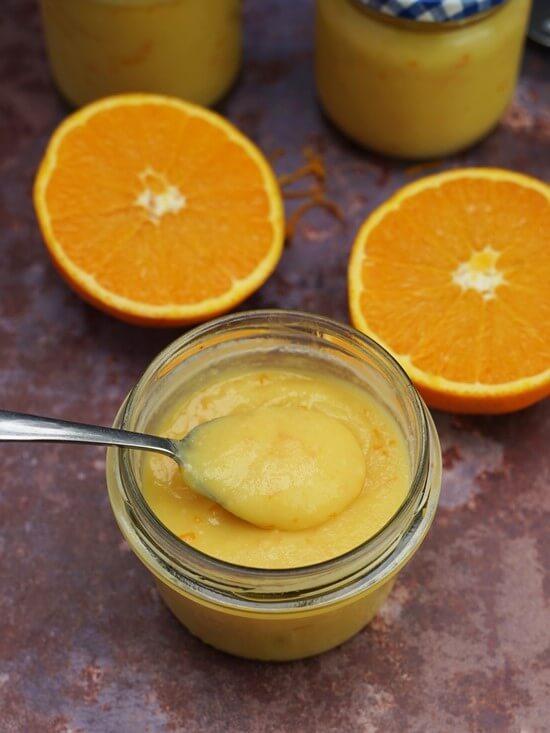
LEMON, LIME & MORE CURD FLAVOURS
Other flavours of fruit curd can be made in the same way as my Orange Curd. For lemon or lime curd you just need to adjust the number of fruits to account for them being smaller than oranges. As they’re less sweet than oranges, you may want to add a little extra sugar. When in season, you can also swap in Seville oranges or blood oranges.
SERVING ORANGE CURD
While fruit curds are made in quite a different way to jams, you eat them in similar ways. Try Orange Curd on toast, Classic Sultana Scones or with Traditional English Pancakes. For me, a real treat is some thick-cut, fresh homemade bread spread with butter then slathered with Orange Curd. For a light but delicious dessert or sweet snack, I love a big spoonful swirled through thick, Greek-style yogurt.
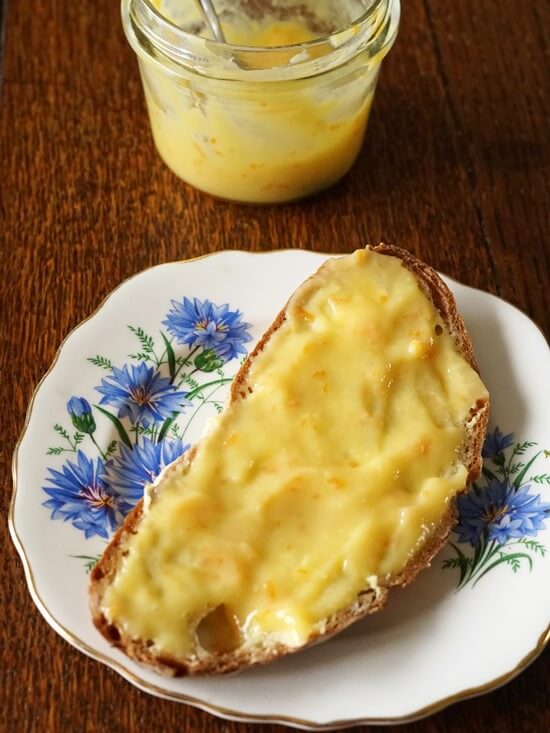
The sweet, zesty curd also makes a fantastic variation on that British favourite Victoria sponge cake. My Orange Victoria Sponge Cake has orange flavoured sponges sandwiched together with vanilla buttercream and lots of Orange Curd.

When I first started making fruit curds, I was sure I’d end up with scrambled eggs! But I never have. So, if you’ve never made them before, I hope you’ll give my easy recipe a try. Let me know how it went by leaving a comment and rating.
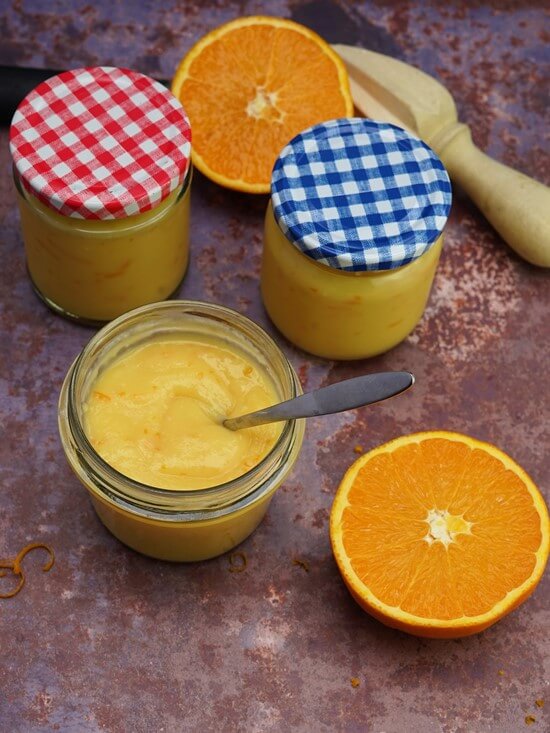

Orange Curd
A variation on the more common lemon curd, this sweet, rich, and creamy preserve with eggs and butter is quick and easy to make at home.
Spread on bread and butter, toast and scones, or eat with pancakes, yogurt, in desserts and cakes.
Ingredients
- 2 med-large oranges zest and juice
- ½ lemon juice only
- 3 whole eggs
- 100 g butter salted or unsalted
- 200 g caster sugar
Instructions
-
Prepare the jars and lids
Wash 3 small jars with plastic-lined lids in hot soapy water then rinse and drain them.
Sterilize the jars and lids by putting on a baking tray in the oven at its lowest setting.
Turn off the oven when the jars and lids are hot but leave them inside until you're ready to pot Orange Curd. If they cool before the curd is ready, switch the oven on again: the curd and the jars must be hot when potting up.
-
Remove the zest from the orange and chop it finely.
Squeeze the juice from the oranges and the lemon half: you will need approximately 175 ml in total.
Lightly beat the eggs until just combined.
-
Melt the butter in a saucepan over medium heat.
Add the sugar and the orange zest, plus the citrus juices strained through a sieve. Stir until the sugar is completely dissolved.
Turn the heat down to low. Tip: if you have a food thermometer, check that the mixture is not higher than 50℃ before adding the eggs.
Strain the beaten eggs through a sieve and into the saucepan then gently stir in with a whisk.
Switch to a spoon and cook the mixture without boiling it, stirring occasionally, until it is thick and coats the back of the spoon. This should take 10 - 30 minutes.
Alternative methods
1. Double Boiler. To make overheating less likely, make the curd in a heatproof bowl over a saucepan of simmering water. Don't let the water touch the bowl.
2. Microwave. Put the butter, sugar, zest and juices in a microwave safe bowl and heat to melt the butter and dissolve the sugar, regularly stirring. Gently whisk in the eggs then heat in 30 - 40 second bursts, stirring between each burst. Do not overheat and when the curd is nearly ready, reduce to 10 - 15 second bursts.
IMPORTANT: for ALL methods do overheat the mixture. If you have a food thermometer, check that it is is no higher than 50℃ before adding the eggs and don't let it get higher than 84℃ after adding them.
-
When the curd is ready, immediately pour into the hot sterilized jars. Protecting your hands with a cloth, screw on the lids and leave to cool. When the jars are cooler, it should be possible to tighten the lids a little more.
Once cold, the jars can be labelled and stored in a cool, dark place or the fridge.
If the jars have an airtight seal (i.e. when completely cold the lids don't spring back with a popping sound when you press down on the middle) the curd should keep for 4 weeks in a cool, dark, dry place, longer if in the fridge. Once open store in the fridge and use within 1 - 2 weeks.
If you don't have an airtight seal, keep in the fridge and use within 1 - 2 weeks.
-
Curd too runny when completely cold?
This means the curd wasn't cooked enough. Remove it from the jars and cook further using any of the methods above. Be sure to wash and sterilize the jars again before refilling.
RELATED RECIPES


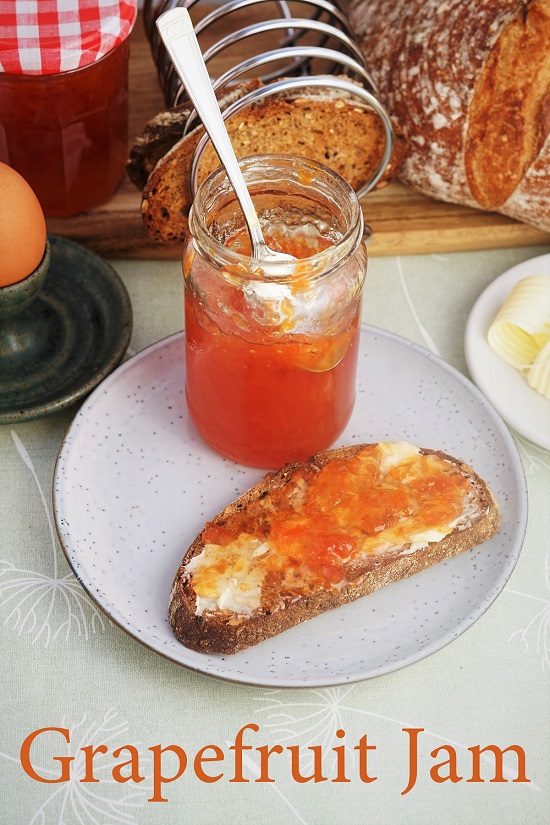

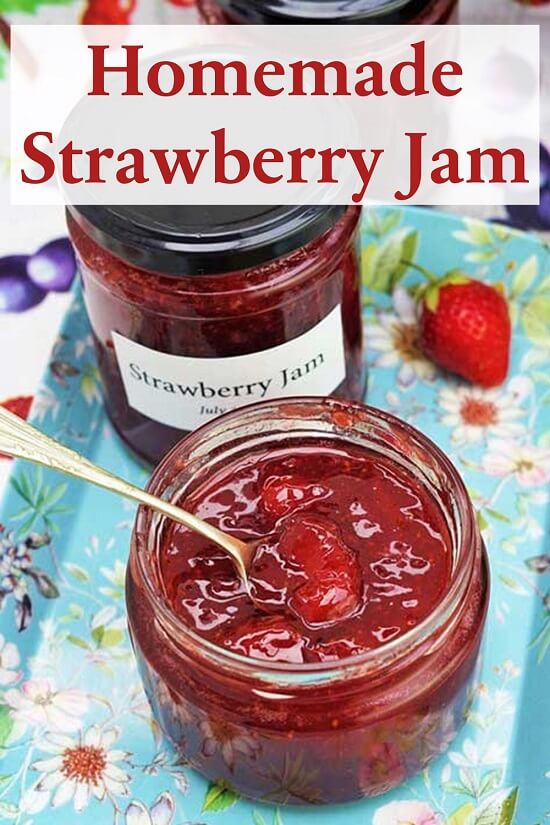
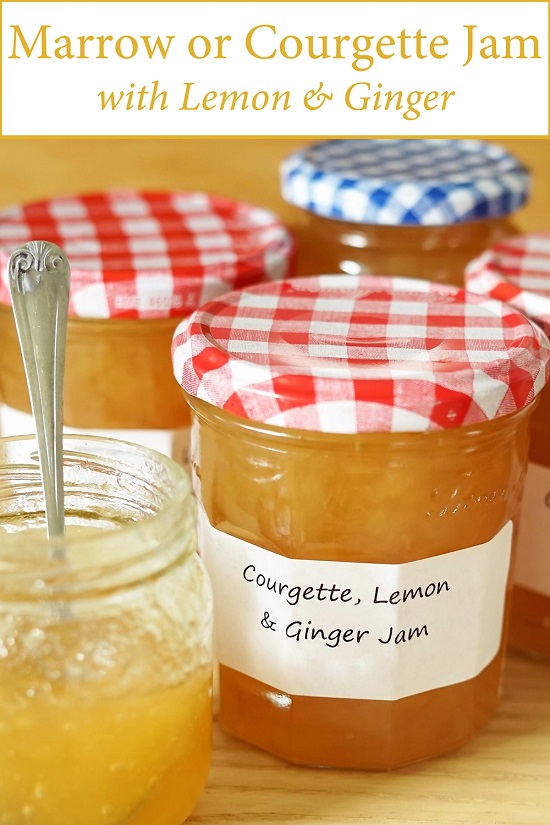
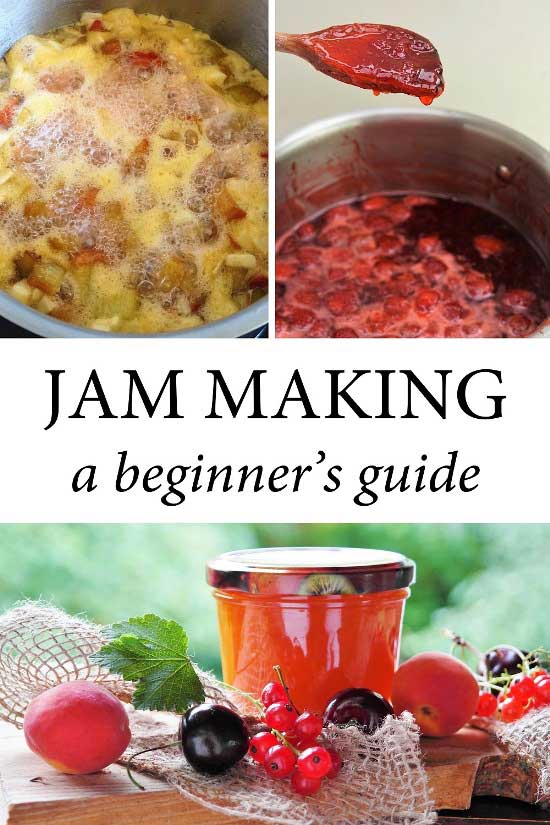
This recipe saved the day! TY! I had too many oranges and voila…turned out great…and ty for all the ideas to use it…just awesome!
Thank you, that’s great to hear!
Your recipes are very easy to follow thanks